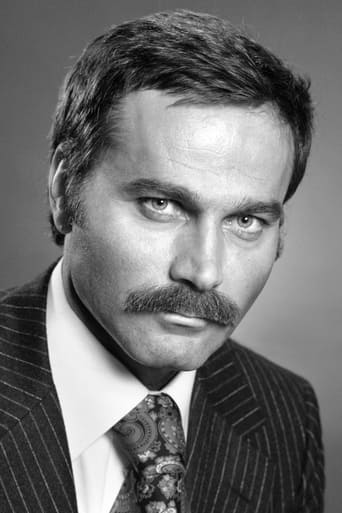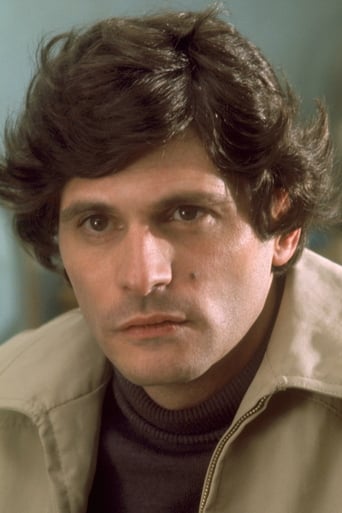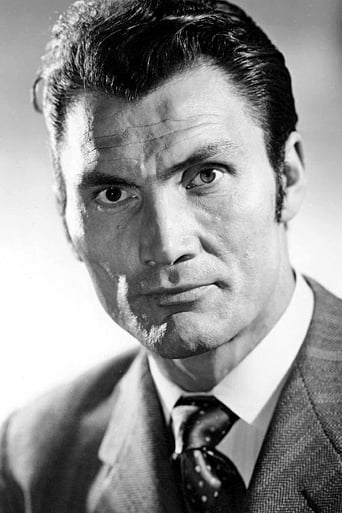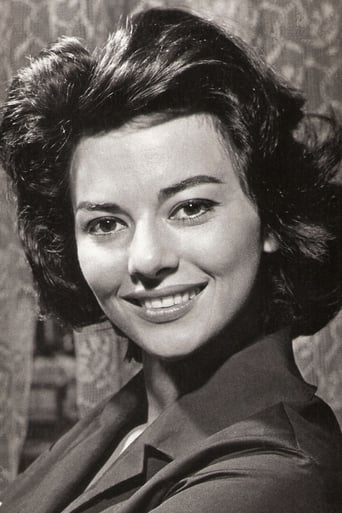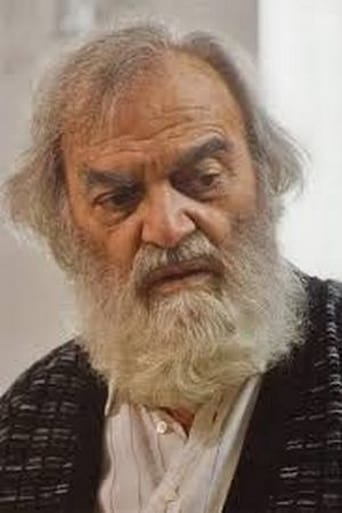Ensofter
Overrated and overhyped
ShangLuda
Admirable film.
Donald Seymour
This is one of the best movies I’ve seen in a very long time. You have to go and see this on the big screen.
Kinley
This movie feels like it was made purely to piss off people who want good shows
ma-cortes
This is a nice Zapata/Spaghetti Western set in Mexico during the confrontation Madero-general Huertas , including communist revolutionaries and mean bandits. Fate brought them together, greed made them inseparable, violence made partners. A Polish named Sergei Kowalski(Franco Nero) is a mercenary, he directs to do transporting silver to a mine , but he only finds a Mexican rebel (Tony Musante) has formed a Guerrilla and have taken control. Nevertheless, Sergei is contracted as hired hand and teaching the leader how to put his idealist fervor into practice. They are pursued by Curly (Jack Palance), a white-suited gay gunslinger.It's a thrilling western with overwhelming showdown between the protagonists Franco Nero and Tony Musante and the enemies Jack Palance and Eduardo Fajardo. Tony Musante, such as Tomas Milian, puts faces, grimaces, crying and overacting, but he plays splendidly. Agreeable intervention of a beauty as Giovanna Ralli. Furthermore, appears usual secondaries from Italian Western as Franco Ressell, Raf Baldassarre, Jose Canalejas, Alvaro De Luna, Simon Arriaga,Lorenzo Robledo, Tito Garcia, and of course Eduardo Fajardo, Corbucci's ordinary. The highlights of the film are the Tony Musante 's burying edge neck similarly to Franco Nero's ¨The Professional ¨, the confronting at the bullfighting square and the Polish wielding a machine gun and shooting though with anachronism because is a modern model. The picture mingles violence, thrills, shootém up, comedy with tongue in cheek and it's fast moving and for that reason is quite amusing. This film belongs to the numerous group that are set during the Mexican revolution, called ¨Zapata Western¨ , like are the Italians: ¨ Duck you sucker¨, ¨The professional¨ ,¨Tetepa¨ and the Americans : ¨The wild bunch¨, ¨Villa rides ¨, and ¨The professionals¨. There are many fine technicians and nice assistants as the cameraman Alejandro Ulloa who makes an excellent photography with barren outdoors, dirty landscapes under a glimmer sun shot on outskirts of Cuenca and of course Almeria, Spain ; however it is necessary an urgent remastering because of the copy is worn-out. The musician Ennio Morricone creates a classic Spaghetti soundtrack and well conducted by his habitual collaborator Bruno Nicolai. Well produced by Alberto Grimaldi -PEA productions- famous producer of ¨The trilogy of the dollars¨ filmed by Sergio Leone. Sergio Corbucci's direction is correct ,he made several classic Italian western : ¨ Django¨, ¨The great silence¨, ¨Hellbenders¨ , ¨The specialist¨ and the ¨Compañeros¨ , the latter bears special resemblance to ¨ The mercenary ¨ and along with ¨ ¨What am I doing in middle of the revolution¨ belongs a Corbucci's trilogy about Mexican revolution. Rating : 6,5/10. Good Spaghetti Western.
kuciak
Many people consider this some great motion picture. I really don't think it is. While I think that people who went to the theater to see it, whether in Europe or the US, I don't think that it will hold up on subsequent viewings as Leone's last three 'Western based films', (I really don't consider this or Duck You Sucker Westerns. Comparisons have been made with Duck You Sucker, and saying this came three years before. Yes is was made 3 years before, but Duck You Sucker is still a better movie, and has better acting to boot. Also I don't see what people see in the music, certainly Morricone gave greater scores for Leone from Fistful of Dollars, to Once Upon A Time in America. Finally as for Corbucci, this film cannot hold a candle to his real masterpiece, The Great Silence.Much has been made by other reviewers here of Palance being a Gay Gunslinger. While this may be true, I think of more interest is that Palances Curly, is an American working for the Opressors here in this film, while Nero's Kowalski is a man from Poland, a country in 1968 which was communist, working, even if for his own greed, for the rebels. I appreciate that Corbucci made the lead character, Polish, being part Polish myself, and remembering the cruel Polish jokes, however I cannot help but feel that Corbucci and the screenwriters by having these nationalities, made some political, and possibly anti-American statement. The shooting down of the plane in the film, could symbolize the shooting of American Planes by the North Viet Namise, or Viet Cong. Corbucci I believe did have Marxist leanings. Palances character being Gay, which would generally have had greater negative connotations in the 60's, than it does today, might have been a way of the creators of this film masking their true intent. If Nero's character had been Russian, I think considering the time that this story takes place, it would have been very obvious to more viewers, and certainly killed distribution into the US. Also finally, Palances' Curly, when people are killed, on his behest, gives the sign of the cross. Other critics have found this ironic, I however see it more as an attack on the Catholic Church, and considering what I believe to have been their support of Franco during the Spanish Civil War, while the Soviet Union supported the other side.This film has been called a political western, which it certainly is. Its politics are interesting, but this does not make it a great film or memorable one. It does not have the memorable moments that Leones films have, which I think stick in ones memory. For a theater goer or Television watcher, if they are not aware of the creators intent, might just be a way of filling in time.
zardoz-13
"Django" director Sergio Corbucci's Spaghetti western "The Mercenary" about an itinerant Polish pistolero Sergei Kowalski (Franco Nero of "Camelot") in Mexico at the turn of the century who takes a poor ignorant peasant (Tomas Musante of "The Bird with the Crystal Plumage") under his gun arm and elevates him to the status of hero of the Mexican revolution beat Sergio Leone's "Duck, You Sucker" by three years. In "Duck, You Sucker," an Irish revolutionary (James Coburn) took a penniless peasant (Rod Steiger) and elevated him to the status of Pancho Villa during the Mexican revolution. Indeed, the basic plots of "The Mercenary" and "Duck, You Sucker" resemble each other closely, except the characters and the endings differ drastically. The peasant here in "The Mercenary" is Paco Roman, a young, wifeless, childless, blue-collar laborer toiling in the mines of a wealthy aristocrat with a taste for opera. In "Duck, You Sucker," the peasant was much older, with a brood of trigger-happy sons, and a passion for thievery. In retrospect, the similarity between "The Mercenary" and "Duck, You Sucker" shouldn't seem too surprisingly when you consider that the same scenarist, Luciano Vincenzoni—who penned "Death Rides A Horse," "For A Few Dollars More," and "The Good, the Bad, and the Ugly"—wrote both "The Mercenary" and "Duck, You Sucker." "The Mercenary" was Corbucci's first Mexican revolutionary western that he would follow up with "Companeros" starring Franco Nero as a Swedish arms dealer, Tomas Milian as the Mexican peasant, and Jack Palance as the villain."The Mercenary" opens in an arena with clowns simulating a bullfight. The main clown is really Paco; he is on the run from wealthy mine owner Alfonso García (Eduardo Fajardo of "Bad Man's River") and a deadly but dandified gambler Curly (Jack Palance) who is in league with Garcia. The Polish gunman Kowalski (Nero) sits in the stands and watches Paco until the time for the sundown comes. At that point, Corbucci and his multitude of writers—among them Franco Solinas of "A Bullet for the General" and Vincenzoni—flash back to the first meeting between our heroes who later become fast friends. Two Mexican mine owner pay Kowalski to get their silver. Curly follows them after he sees them talking to Kowalski. Curly is deeply interested in them because he had to have one of his henchmen, Studs (Franco Ressel of "Sabata"), killed for trying to kill Kowalski. You see, Kowalski caught Studs gambling with loaded dice and made him swallow the dice with a glass of milk.Anyway, Curly kills the two Mexicans and rides out to get the silver and Kowalski. Meanwhile, at the mine, Paco and his fellow miners—exploited at poverty wages—dine on execrable food and Paco discovers a lizard in his food. Everybody has a good laugh about the 'meat' in the grub. Later, in Garcia's office, the mine owner comes face-to-face with Paco holding a pig on a platter with a pistol sticking out of its mouth. Paco hand feeds Garcia the lizard and the two are enemies for life. When Kowalski shows up to pick up the money, he finds himself surrounded by Paco and his men. They are going to kill the Polish gunman until the Mexican army, with a vengeful Garcia in the ranks, intervenes with an artillery barrage. Vincenzoni wrote a similar scene in Leone's "The Good, the Bad, and the Ugly" as Tuco was about to hang Blonde from a hotel rafter. In the middle of all the shooting, the wealthy Paco explains that the silver can never be gotten to but he has fistfuls of paper money. He pays Kowalski to teach him how to operate a machine gun and the two become revolutionaries.Kowalski takes his hard earned money and leaves Paco, only to be trapped in the desert by Curly and his gunmen. This time Paco intervenes in the showdown between Kowalski and Curly and kills all of Curly's men and forces Curly to walk away without a stitch of clothing on in humiliation. Now, Curly has it in for Paco as well as the Polish soldier-of-fortune. Essentially, Kowalski teaches Paco how to run a revolution until an interfering woman Columba (Giovanna Ralli of "Cannon for Cordoba") joins them and turns Paco against his pal. As they make more money, Kowalski's demands become outrageous. He prefers to be paid in coin and he forces Paco's army to stop in the middle of the desert so that he can improvise a shower to cool himself off. No sooner have Paco and Columba wed and left Kowalski tied up in a stable than Garcia and Curly arrive, again with the Mexican army and a bi-plane that drops bombs.Spaghetti director Sergio Corbucci wrote and directed twice as many westerns as Sergio Leone. Corbucci lacked Leone's flamboyant style and his lucky break in establishing the Italian western. Nevertheless, he was his equal when it came to staging gunfights and helming snappy action stories. Franco Nero became his Clint Eastwood and Corbucci gained fame as Burt Reynolds called him 'the other Sergio' for his diverse oaters. Corbucci bucked the 'southwest' look of Spaghetti westerns with his oddball oater "The Great Silence" and his muddy western "Django" where the hero dragged around a coffin with a machine gun stashed in it. Corbucci maintains a furious pace throughout "The Mercenary," even though it starts up with a flashback and sacrifices some suspense—because you know the principals cannot die until the flashback ends. Predictably, the body count is as high as the film's cynicism. At one point, Curly jams a hand grenade into a revolutionary soldier's mouth and blows him up. However, Corbucci shows uncharacteristic flair when he stages a killing and a torture scene and declines to show the violence in each scene. In one scene, a thug batters the truth out of an unwilling victim while we watch Curly ride around in a circle. This kind of subtlety is very unusual for a Spaghetti western.
lost-in-limbo
An Mexican outlaw, with the help of a hired Polish gunslinger go out to make an massive rebellious army to take back what they believe is an poorly treated Mexico that is run by crooked and rich upper-class folk. So now they are part of the growing revolution, but the two men seem to have their ups and downs on who really is in-charge here, as the Mexican peasant actually relies on the European cowboy most the time. While, the army might be on the rebels' tails, but also too is another gunslinger that has a score to settle with the two men.I don't know how long I've had this for, but I nearly missed the opportunity of watching this more than decent spaghetti western. Basically I recorded it off TV some time back onto a blank DVD, which I was going to use, until I realised that this flick was ready to go. Phew, lucky I decided to check it before erasing it. Also after the opening credits the film actually went black and dead quiet for 3 minutes or so, and I was thinking maybe I wasn't meant to see it, but that was short-lived and I was back right into it. Anyhow, away from my pointless ramble "The Mercenary" which is first I've seen of any Corbucci's films was an exciting gung-ho spaghetti western that doesn't let up on the violence and colourful characters. Although the violence isn't terribly graphic and sometimes it happens off screen, but these minor glitches don't take away anything from it. The actual characters might be hard to like as they come across as incredibly greedy and downright blood thirsty for violence. Which I say isn't too much of a bad thing for this type of flick, because that's one of the draw cards of this sub-genre, but it's just that the characters are expendable to it, well maybe not Franco Nero's easy going character. Sergio Corbucci direction is the key also because the story isn't planned out with any real sort of purpose but just to stage one comical scene or action packed moment. But at least those moments actually worked to make you forget the plot's shortcomings. Plus it was jokier than I thought it would be. From that point it did kind of reminded me of Leone's 'The Good, the bad and the Ugly', that was because of the buddy humour that they played around with and like another reviewer mentioned Paco Roman did have an uncanny nature to that of Taco from GTBTU. Other than that, you can see other influences from the dollar trilogy evident too. For me Nero's gunslinger has a striking resemblance and steady persona to that of Eastwood's character of Dollar trilogy and the showdown in a bullring you could think the same too. But that's enough about that.What else it has going for it is the great and thunderous score that you come to expect by the ever-reliable Ennio Morricone and the cinematography gets some dynamic treatment. The script is filled with cynical humour and leaden dialog on that of the rich and poor, and how greed can blind you to true intentions. There an over abundance of sharp and witty replies and that's especially between Kowalski, Paco and Columba. The three leads Franco Nero, Tony Musante and Giovanna Ralli as ever gusty but beautiful Columba put in exceptional performances and Jack Palance as Ricciolo 'Curly' the gunfighter on the trail of the group brings the added venom to the villain role, but I thought he was vastly under-used and his agenda with Kowalski would've made for more interest than what is given. We're thrown right into this baroque western with the backdrop splashing off the screen with such exuberant touches of flair and gusto. Corbucci paces the film swiftly by making it more compelling and surprising the further along it went, without letting you doze off because of some well stage scenes like a bank heist, bombing of an Mexican town and the final shootout. Actually it would be hard to doze off with the loud sound effects and bellowing score. Even so just when you think its finished and the climax feels like it came too early, there's even more to come afterwards. Overall, Corbucci takes advantage of this good rolling adventure, even if it does lack some sort of killer punch or impact to make it overly memorable and grand. But nonetheless it's swell escapism fun that's bursting at the seams with madness, double crossings, plentiful violence, promising performances and grit.It's a more than decent way to the past time with. I see 'Companeros (1970)' gets praised a lot, so it looks another to hit my must-see list.


